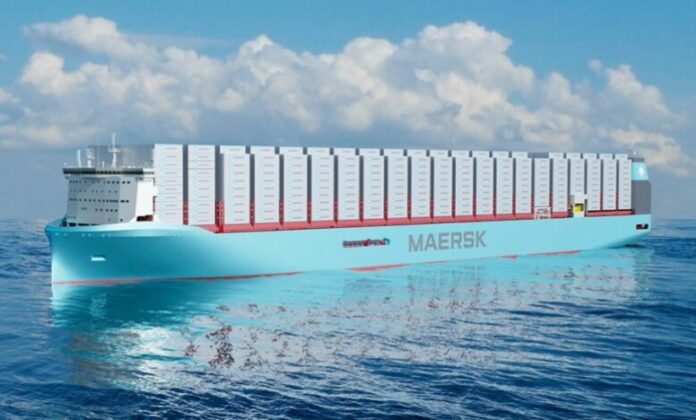
-
New IMO rules to curb shipping industry’s carbon emissions are expected to limit ship supply growth as owners introduce “greener vessels” and send older ones to scrapyards
-
IMO’s imposition of the policy may coincide with shipping rates returning to pre-pandemic levels next year and help the shipping market recover in 2024
-
The fuel choice is challenging tor vessel owners because not many fuels have the necessary energy density. Maersk is focusing on biomethanol and has ordered 12 16,000 TEU methanol-powered ships
New rules to be imposed by the International Maritime Organization starting January 2023 to curb carbon emissions are seen to cause limited ship supply growth as owners introduce environmentally friendly vessels and send older ships to shipbreakers for scrapping.
The shipping capacity reduction resulting from the IMO rules, which will come as freight rates are expected to return to pre-pandemic levels in 2023, is likely to help the market recover in 2024 onwards, according to S&P Global Market Intelligence.
“Freight rates may return to the pre-pandemic level in 2023 with the absence of congestion and weaker economic conditions,” said Daejin Lee, lead shipping analyst at S&P Global Market Intelligence.
“However, limited active ship supply growth driven by regulations, which will lead to vessel demolitions and speed reduction, may help the market to recover in 2024 onwards.”
IMO will implement in the New Year the Efficiency Existing Ship Index (EEXI), a design requirement for existing vessels. Many vessels will go for Engine Power Limitation (EPL), and maximum and operating speed are expected to be reduced.
The Carbon Intensity Indicator (CII) regulation, which will be assessed yearly with stricter emission limits, will start to reduce sailing speed from 2024 and the impact may become significant in scrap activities from 2025 onwards with favorable age profile, Lee said in his analysis.
He said the CII rating issue would incentivize higher demurrage to reduce idling time and prevent further upside risk in congestion in coming years. While a significant drop in freight rates with high bunker prices has already reduced sailing speed, EEXI-EPL will prevent potential speed recovery.
“Since 95% of vessels in service are still using conventional fossil fuel, with IMO’s CII regulation, many vessels will end up scrapped earlier than the normal historical lifespan of vessels, which will support thefreight market in the medium and long term,” Lee said.
Newbuilding contracts in 2021 reached the highest since 2015, mainly with container vessel orders, but remained lower than the shipbuilding boom period in the 2000s.
Fresh contracts were limited in 2022 due to high prices and limited capacity in top-tier yards while many owners took the options of existing contracts for much lower contract prices.
The container sector is expected to face supply-side pressure due to heavy investment in newbuildings, while fresh new contracts are limited in other sectors, including the dry bulker and tanker.
Gas has been a preferred choice for an alternative fuel; methanol (green fuel) started to gain attention recently, mostly from the container sector.
An article on the Harvard Business Review by Willy C. Shih said the fuel choice is challenging for vessel owners because not many fuels have the necessary energy density. Maersk is focusing on biomethanol and has ordered 12 16,000 TEU methanol-powered ships.
CMA CGM is betting on liquefied natural gas (LNG) as an interim transition fuel to some form of hydrogen. It has already deployed 12 LNG-powered vessels on its routes and will have 44 operating by 2024. Mitsui OSK Lines plans to launch 90 LNG-powered ships by 2030, and Ocean Network Express (ONE) has ordered 10 13,700 TEU ships that would run on either ammonia or methanol.
Shih said LNG originally seemed to have a significant advantage near term as it is available in many regions and is easier to handle than methanol and ammonia. But the Ukraine war sent LNG prices soaring and cast doubts on Russian supplies, he said.
Shih said the Emissions Trading Scheme that the European Union plans to introduce in 2023 will add to shipping lines’ costs. The EU will require them to buy allowances for 50% of emissions for voyages connecting EU and non-EU ports. Maersk has already announced surcharges for its Asia to North Europe and North Europe to US trade lanes.




